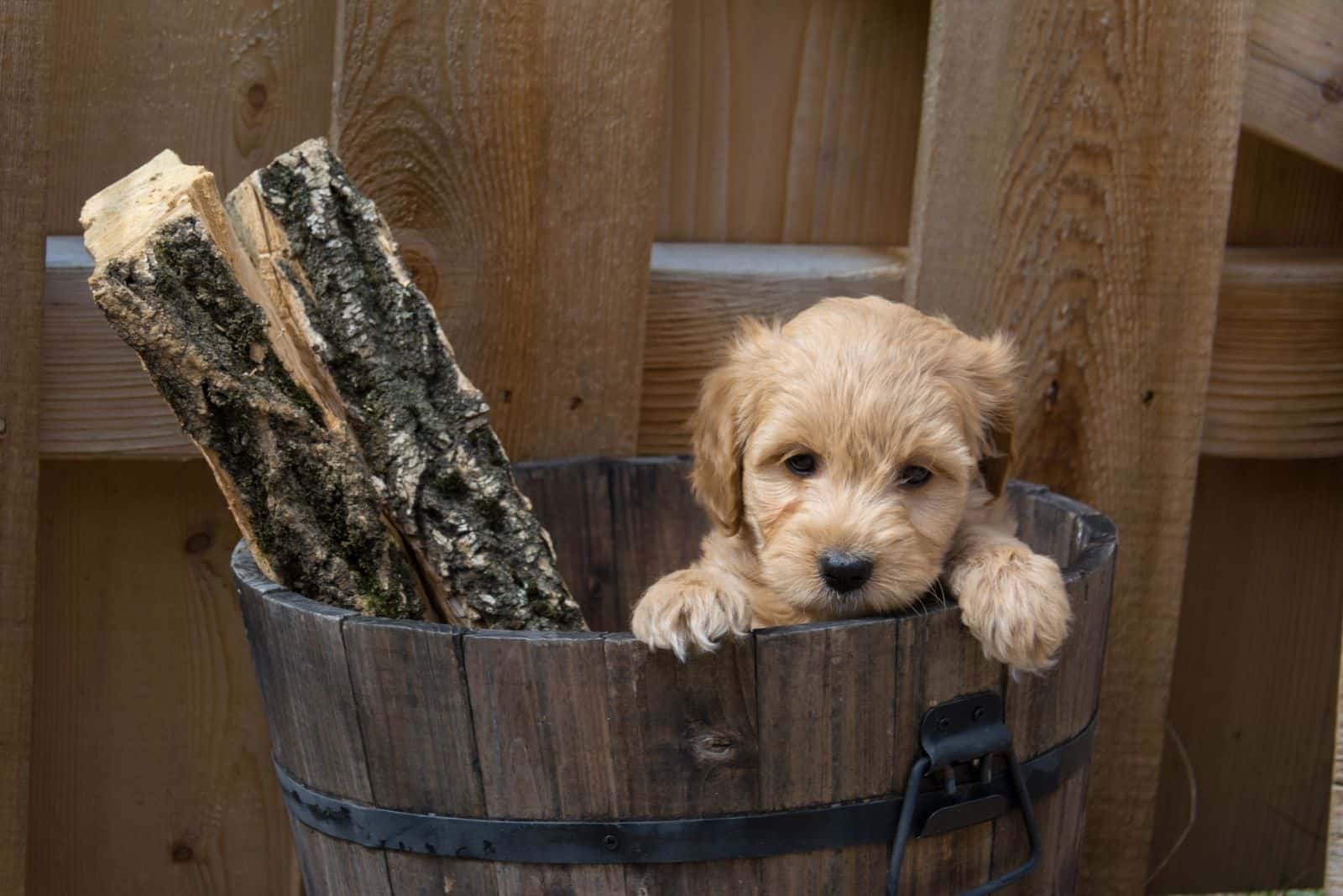A purebred Poodle and a purebred Golden Retriever sure have a lot of excellent qualities. Well, we can say the same for their love child, the Goldendoodle.
This teddy bear-looking puppy has been stealing hearts for over three decades now. People love them because they make terrific pets for allergy sufferers.
If you’re fighting pet allergies, but you desperately want a dog, then getting a hypoallergenic dog breed is your only solution.
If standard Goldendoodles are amazing, wait until you see the F1BB Goldendoodle!
With so many pawmazing traits of a hypoallergenic dog, the F1BB Goldendoodle is a true rock star among multi-generation Goldendoodles!
But first, let’s meet this crossbreed and find out about different Doodle generations. Then, we’ll get to know our F1BB Goldendoodle better!
Tell Me More About An F1BB Goldendoodle?
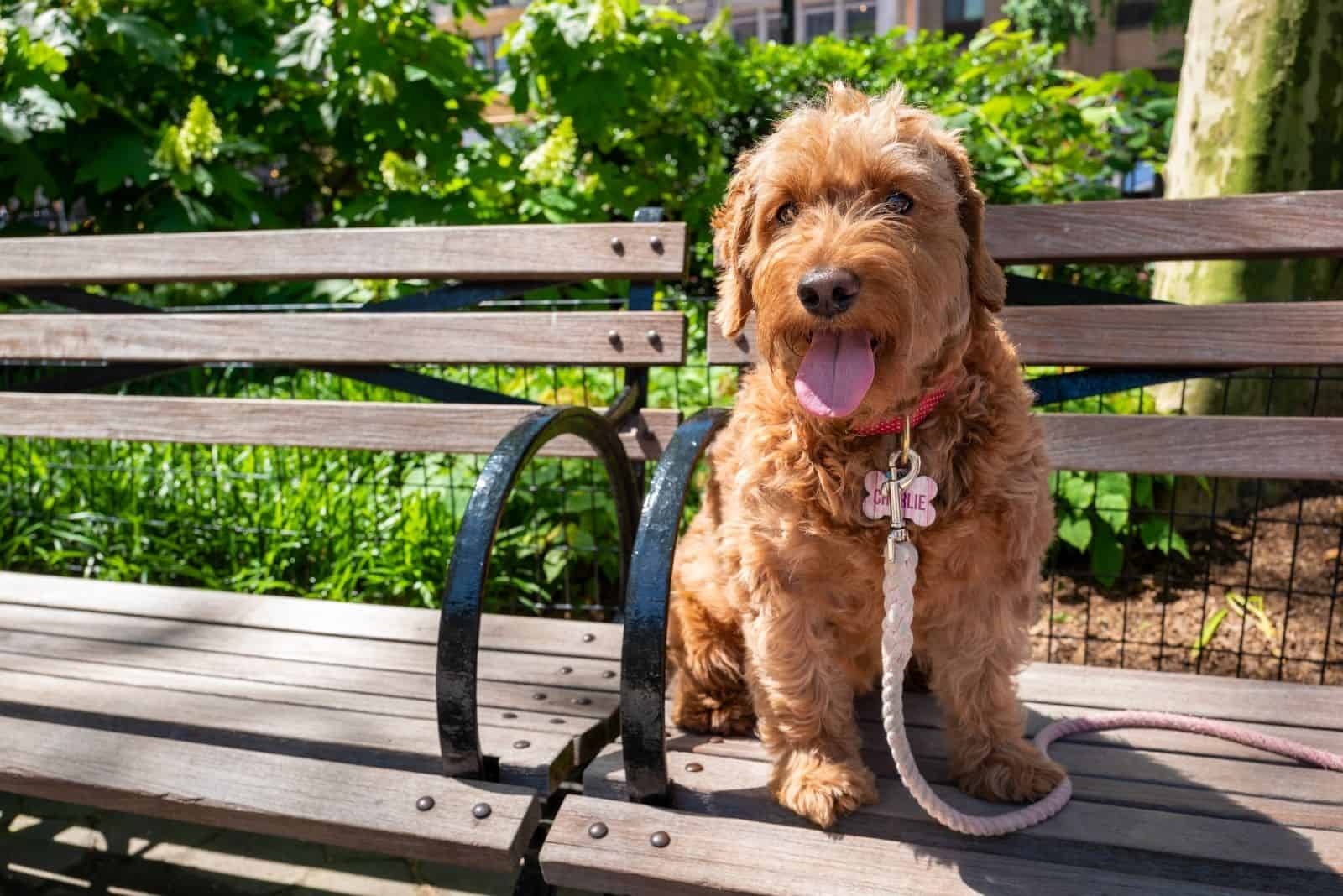
The F1BB Goldendoodle is what you get when you combine an F1B Goldendoodle and a Poodle. As the letters B state, this puppy was backcross-bred twice, which guarantees Poodle traits.
In fact, this is the generation with the most Poodle DNA. This is actually a great thing because such Doodle puppies don’t have much genetic diversity, meaning they won’t be prone to numerous illnesses as some other Doodles or crossbreed dogs.
In other words, they’re very close to being hybrid vigor dogs, especially resistant to numerous health problems.
The F2BB Goldendoodle is another multigen Doodle with terrific non-shedding features. This makes them extremely popular with many dog lovers.
These Doodles also have a curlier coat, which means more grooming and regular brushing sessions.
But, more on their grooming needs later. Let’s see what lies inside these Doodles.
Tell Me More About All Goldendoodles
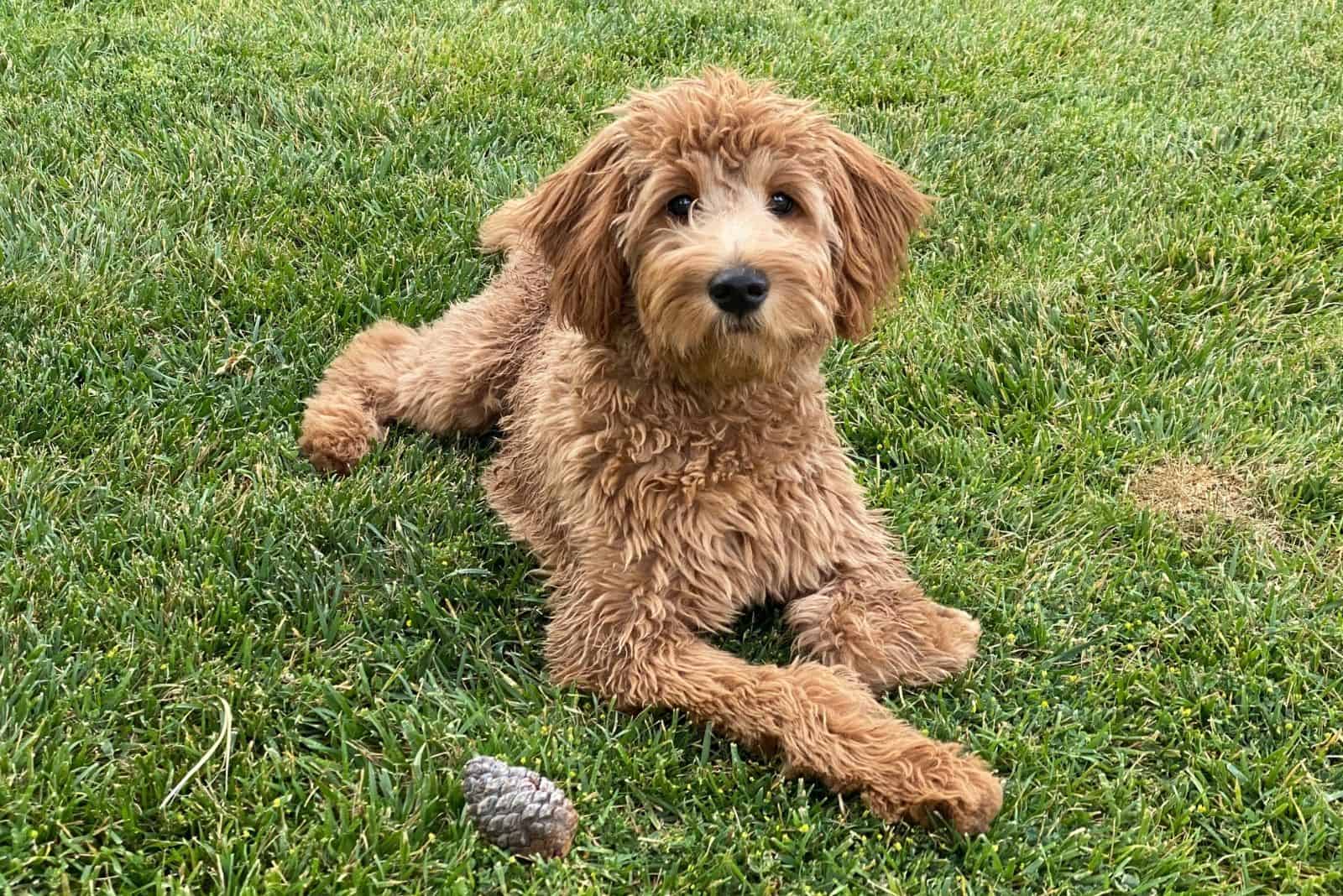
The Goldendoodle, sometimes known as the Groodle, is a fairly new designer dog.
This hybrid was developed for the sole purpose of having a dog that’s not prone to shedding. Since many of us these days are allergic to dogs, a need for a hypoallergenic dog was in order.
And, who would bring hypoallergenic puppies in the world better than a Poodle parent?
Combined with America’s favorite, the Golden Retriever, Poodles took a major role in creating this hybrid dog breed. But, this wasn’t a new thing for them. Poodles, along with Cocker Spaniels, produced healthy litters of Cockapoos.
Breeders thought the world needed a bigger dog than a Cockapoo, and thus, the Goldendoodle was born back in the 1990s.
Goldendoodles have the best of two worlds combined: the Poodle’s intelligence and amazing coat features, and the Golden’s sweet temperament.
Goldendoodles are a new crossbreed, and that’s why the vast majority of them are still first generation Goldendoodles. We’ll talk about the rest of the generations soon.
What you need to know about this crossbreed is that its size depends on how big the Poodle used in the process was. We can tell apart three Goldendoodle types: miniature, small, and large standard.
What Are The Three Goldendoodle Sizes?
Miniature Goldendoodles are puppies from a combination of a Golden and a miniature or toy Poodle. These dogs can grow up to be 13” to 20” at the withers. Usually, they weigh no more than 35 pounds.
Small standard Goldendoodles are slightly bigger, ranging from 17” to 20”. Of course, they’re heavier, and range from 40 to 50 pounds. You can get one of these Doodles if you breed a Golden Retriever with a small standard Poodle.
Lastly, the biggest of them all are large standard Goldendoodles. These pups can grow up to 24” at the withers, and range up to an incredible 90 pounds!
All Goldendoodles, no matter their size, have the same wavy coat that can be curlier with some generations. Usually, the coat is two to three inches in length. Naturally, the hair is much shorter on the head and the muzzle.
Since they’re coming from the Poodle parent, which comes in over 20 amazing coat colors, Goldendoodles also have quite a rich range. You can find them fashioning a white, cream, golden, apricot, gray, copper, red, or black coat.
Let’s Meet All Goldendoodle Generations!
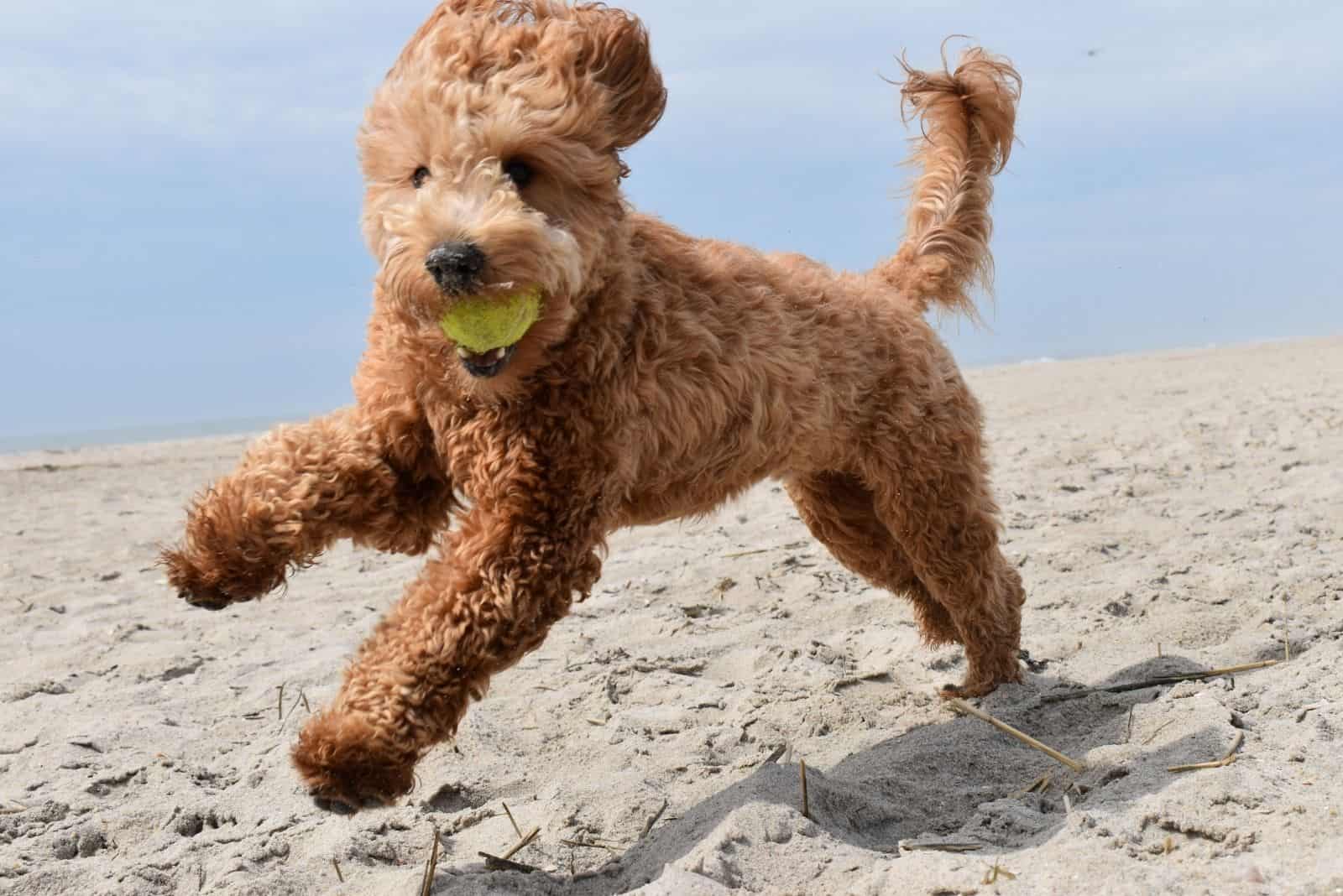
Goldendoodles are a crossbreed that has been pretty popular in the breeding business. That’s why you should be aware that there are numerous Goldendoodle generations out there.
Each generation can be bred back once or twice.
For those of you who are new at the whole Goldendoodle breeding process, let me explain what those letters and numbers stand for.
The letter F is a marking for the filial hybrid (or crossbreed dogs) to put it simpler. The number is the number of Goldendoodle generations, which can be 1, 2, or 3. Lastly, the letter B stands for a backcross puppy, which can be BB as in a double backcross.
Let’s get to know each Goldendoodle generation a bit better!
F1 Goldendoodle
The F1 Goldendoodle is the original Goldendoodle coming from two parent breeds – the Golden Retriever and the Poodle. Both parents are present in the same percentage, 50-50%.
The F1 Doodles are considered to be light to moderate shedders. Their coat can be curly or wavy.
I recommend you pick the first-gen Goldendoodle if you don’t have severe dog allergies.
F1B Goldendoodle
As I mentioned earlier, the letter B stands for a backcross puppy.
The F1B Goldendoodle was backcross bred once with the Poodle. These dogs have around 75% of the Poodle parent, and the rest belong to the Golden.
The F1B Doodles are more popular than the original Goldendoodle because of their non-shedding qualities. These dogs have short and curly hair, which traps the loose hair coming from the undercoat, and thus, prevents allergies.
Another bonus for these Doodles is the fact that they come in more colors, ranging from champagne, apricot, to red and parti options.
F2 Goldendoodle
The F2 Goldendoodles clearly belong to the second-generation Goldendoodles.
But, how do you get these pooches? Well, there are several ways of getting a second generation.
The most common way is by breeding two F1 Goldendoodles. Other ways include breeding an F1 to an F1B, and an F1 to an F2 Goldendoodle.
As you can imagine, breeding to get the second generation is a complicated process. These Doodles are quite rare. To make things even more complicated, breeding the second-gen litters doesn’t guarantee you’ll get hypoallergenic puppies.
Some F2 litters turn out to be more similar to the Golden Retriever. This reduces their non-shedding traits drastically. And, since there’s no guarantee of the hypoallergenic features, the price of the F2 Goldendoodle is pretty low.
Simply put, if you get an F2 puppy more similar to the Poodle, you’re lucky!
F2B Goldendoodle
Just like the standard F2 Goldendoodle, the F2B Goldendoodle also has unpredictable traits. But, luckily, they do come with slightly better features.
The F2B Goldendoodle is a result of backcrossing the F2 Doodle and the Poodle. This ensures that the litter has a better chance of being hypoallergenic like the Poodle.
Their curly hair makes them a good fit for people with mild allergies.
The only downside, besides their slight unpredictability, is their price. The more hypoallergenic the puppy is, the higher the price.
F2BB Goldendoodle
The F2BB Goldendoodles were backcross-bred twice by using F2 Goldendoodles and Poodles.
Since they have similar DNA to the Poodle breed, these Doodles are considered to be hypoallergenic. But, they’re still quite hard to find.
F3 Goldendoodle
The F3 Goldendoodle is another Doodle with unpredictable features. This makes them very rare Doodles.
To get the third generation of Goldendoodles, the breeder has to breed two F2 Goldendoodles.
Is Something Missing?
If you watch carefully, you will notice that something is truly missing from this little list of Goldendoodle generations.
It’s our Doodle of the day – the F1BB Goldendoodle!
Let’s see what this Doodle is like.
What Kind Of Personality Does An F1BB Goldendoodle Have?
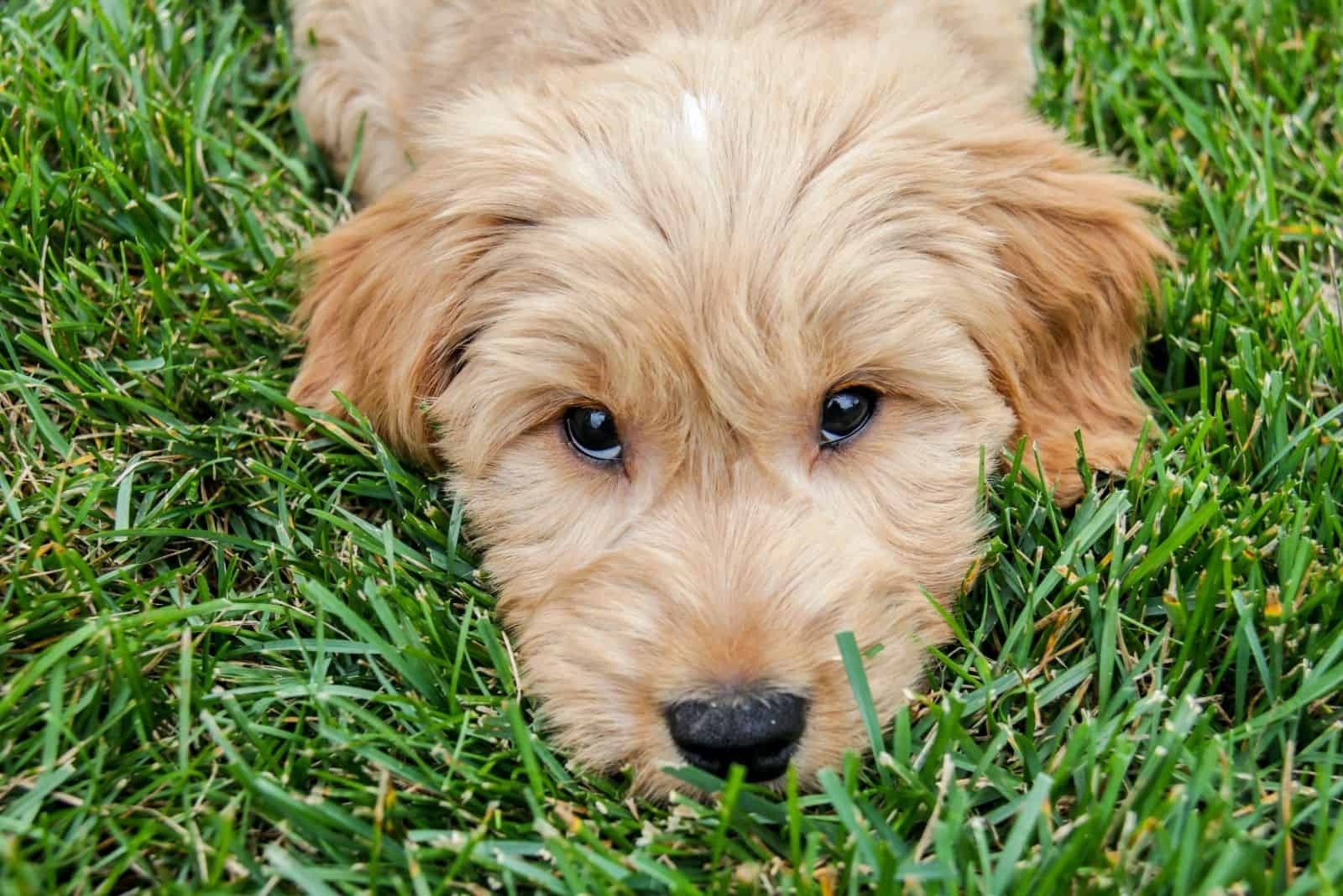
The sweetest of them all!
The truth is, all Goldendoodles, including our F1BB Goldendoodle, are great pets not only for those suffering from severe allergies.
This is one of the sweetest dog breeds in the world.
They’re beyond affectionate, loyal, and very devoted to their family. But, their kind souls aren’t the only reason why Goldendoodles are so sought after.
You probably know this, but it doesn’t hurt to say it once more. Goldendoodles are terrific service dogs as well as therapy dogs. They even make great trackers and sniffing dogs. It’s all thanks to their improved senses of smell, and their high intelligence.
Sure, just like other dogs, Goldendoodles need training and socialization to curb negative and destructive behavior. But, other than that, I see no reason why the F1BB Goldendoodle shouldn’t be your next pet!
How Healthy Are F1BB Goldendoodles?
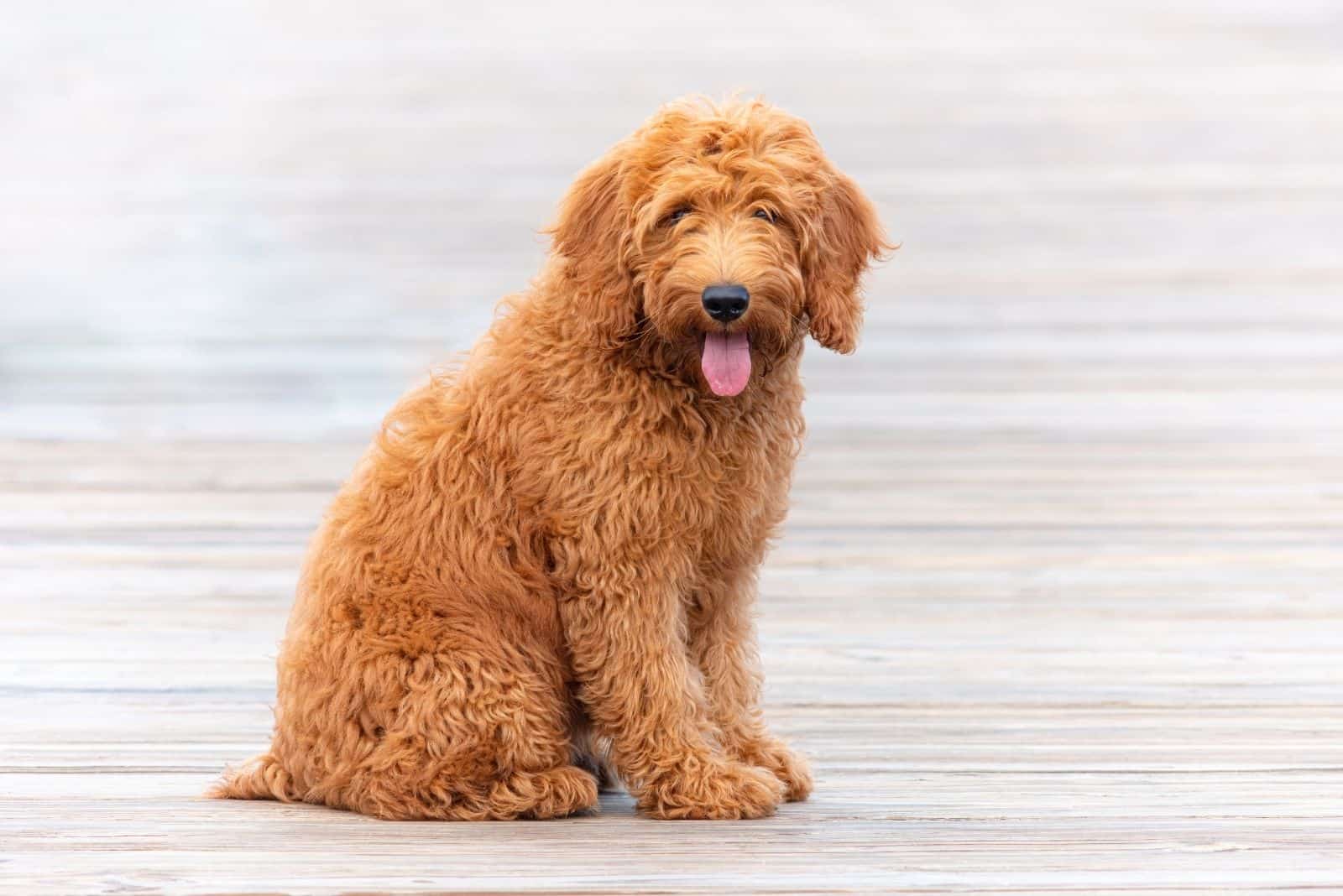
Goldendoodles are crossbreed dogs, and as such, they carry the genetic material from two parent breeds.
Many dog experts argue whether cross breeds are healthier or more prone to some diseases. There are arguments on both sides, and it’s still not quite explained as to which side is right.
As for the F2BB Goldendoodle, they’re proven to be healthier since they don’t have much genetic diversity. I’ve already mentioned this earlier. But still, coming from a limited genetic pool doesn’t mean no disease will strike this crossbreed.
The F2BB Goldendoodles, like all Doodles, can suffer from certain health problems.
The biggest health issues with this Goldendoodle generation are:
• hip dysplasia
• elbow dysplasia
• Progressive Retinal Atrophy or PRA
• Von Willebrand’s Disease (VWD)
• juvenile cataracts
• subaortic stenosis
Hip Dysplasia
Despite the popular belief, hip dysplasia is a health condition that can appear in all dog sizes. Medium or large dog breeds aren’t the only ones suffering from it. The F2BB Goldendoodle can also have problems with this dysplasia.
Hip dysplasia occurs when the ball and the socket grind onto each other as they’re not the right fit. The joint will lose its primary function over time, and thus, make it harder for the dog to move.
Hip dysplasia is a hereditary disease, but it can also be caused because of an extensive growth rate or obesity.
You will notice the first signs if your dog has reduced mobility, lameness, if he’s in pain, or acting in distress.
Hip dysplasia can significantly shorten a dog’s life, and as such, it must be treated immediately. That’s why you must always ask the breeder to provide you with testing results for canine hip dysplasia. If they’re not in order, don’t buy such a puppy.
Elbow dysplasia
To understand elbow dysplasia, first, you need to know that the canine’s elbow consists of three bones. If at least one of them doesn’t fit snugly with the rest, that dog will have mobility issues.
Elbow dysplasia is a hereditary condition, but it can also be developed from some other bone-related disease like osteochondritis.
Early detection will prevent further problems, but you should take your dog to the vet at the first sign of this problem.
Elbow dysplasia isn’t asymptomatic, meaning the dogs will show some symptoms like crackling sounds coming from the affected elbow, stiffness, difficulty in moving the leg, etc.
Progressive Retinal Atrophy
Progressive Retinal Atrophy is a condition that can be transferred from the parents to the litter. Some dogs are more prone to this disease, including Poodles. That’s why we can say that F1BB Goldendoodles are susceptible to this disease.
The first sign of PRA is night blindness, followed by complete blindness. The dog’s pupils are milky or cloudy as if something is placed over them.
Unfortunately, there’s no effective treatment for PRA. However, you can prevent this condition by buying from breeders who test their dogs for PRA and other eye conditions.
Von Willebrand’s Disease
One thing that dogs and humans have in common is a bleeding disorder named Von Willebrand’s Disease. Even though Dobermans have more chances of having VWD, it’s still possible for other dog breeds to have it, including F1BB Goldendoodles.
To help you understand VWD better, let’s say this bleeding condition is caused when the blood platelets can’t form clots to stop the bleeding.
There are no signs of VWD other than occasional bleeding from the nose, the vagina, the gums, as well as continuous bleeding after some trauma.
You have to understand the severity of this condition. If the bleeding continues without being stopped, the dog may bleed out and die.
Unfortunately, there is no cure for this health problem.
Juvenile Cataracts
There’s a reason why we call them juvenile cataracts. It’s because they can be spotted at an early age (6 months). However, some puppies get cataracts at birth.
The obvious sign of cataracts, besides your dog bumping into obvious things, is a white spot in the center of their eye.
What’s good about this condition is that it doesn’t become worse quickly. Some dogs can live many years before the cataract starts growing.
Still, those dogs with large cataracts that are obscuring their vision need immediate treatment, possibly surgery.
Subaortic Stenosis
Subaortic stenosis isn’t that common, but it still occurs with F1BB Goldendoodles.
This condition is described as narrowing of the aortic valve that causes blockage and doesn’t allow the proper blood flow through the heart.
If this disease isn’t recognized at birth, it will show up sometime during the dog’s first year.
Aortic stenosis, if it’s severe, must be treated with beta blockers and sometimes even surgery.
Tell Me All About Their Hypoallergenic Traits
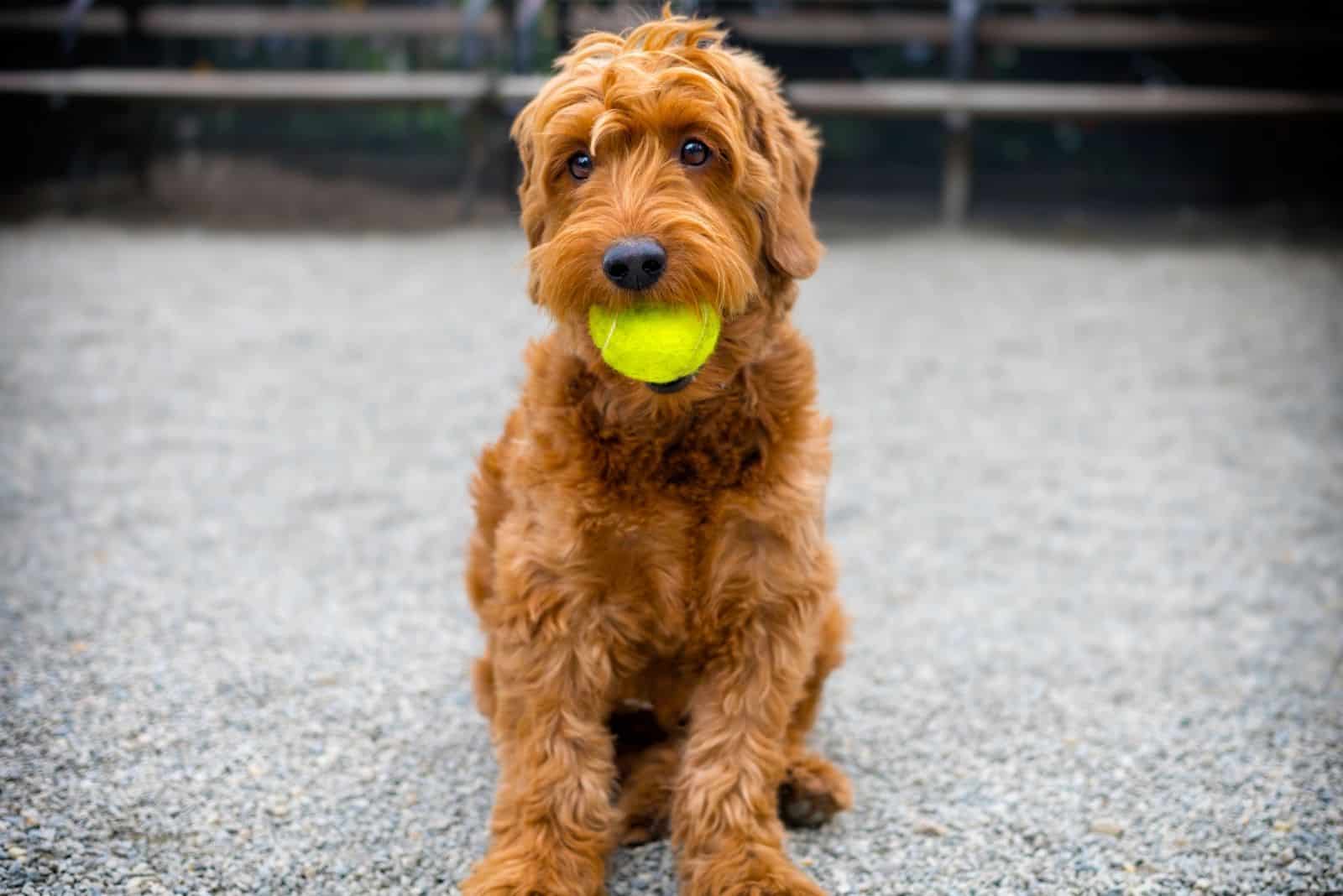
The biggest reason for breeding Goldendoodles is their hypoallergenic nature.
With the rise of dog-related allergies, breeders have found themselves in a big problem. Standard dogs just wouldn’t do it for allergic people. Breeders needed special breeds that wouldn’t shed heavily and wouldn’t have chemicals in their saliva and dander which trigger reactions.
Over the years, Goldendoodles were bred to perfection. The result is many Goldendoodle generations. But, of all the generations, the F1BB Goldendoodle is known to have the most hypoallergenic traits.
The F1BB Goldendoodle can come in numerous lovely coat colors such as brown, cream, red, black, and apricot. However, their coat will change color as they grow, usually around nine to sixteen months of age.
But, what doesn’t change is their coat type. The F1BB Goldendoodles fashion a silky soft coat that’s wavy. The outer coat with all those curls will trap any loose hair and won’t allow dispersion all over the house.
But, these non-shedding features don’t come without a hefty price. All Goldendoodles, especially F1BB Goldendoodles need regular grooming and brushing. More on which brushes to use and how to groom Goldendoodles later.
Now, I want to turn your attention to something that may cause problems with your Goldendoodle’s coat.
Sure, Goldendoodles are pretty, with a fluffy coat and stunning shades, but imagine what happens when parasites, infections, or allergies strike your dog. The coat will lose its shine, and the hair will become brittle.
Besides parasites like red mange, some health conditions can cause hair loss and a terrible coat condition, too. Usually, dogs suffering from hypothyroidism will experience severe hair loss.
FAQs
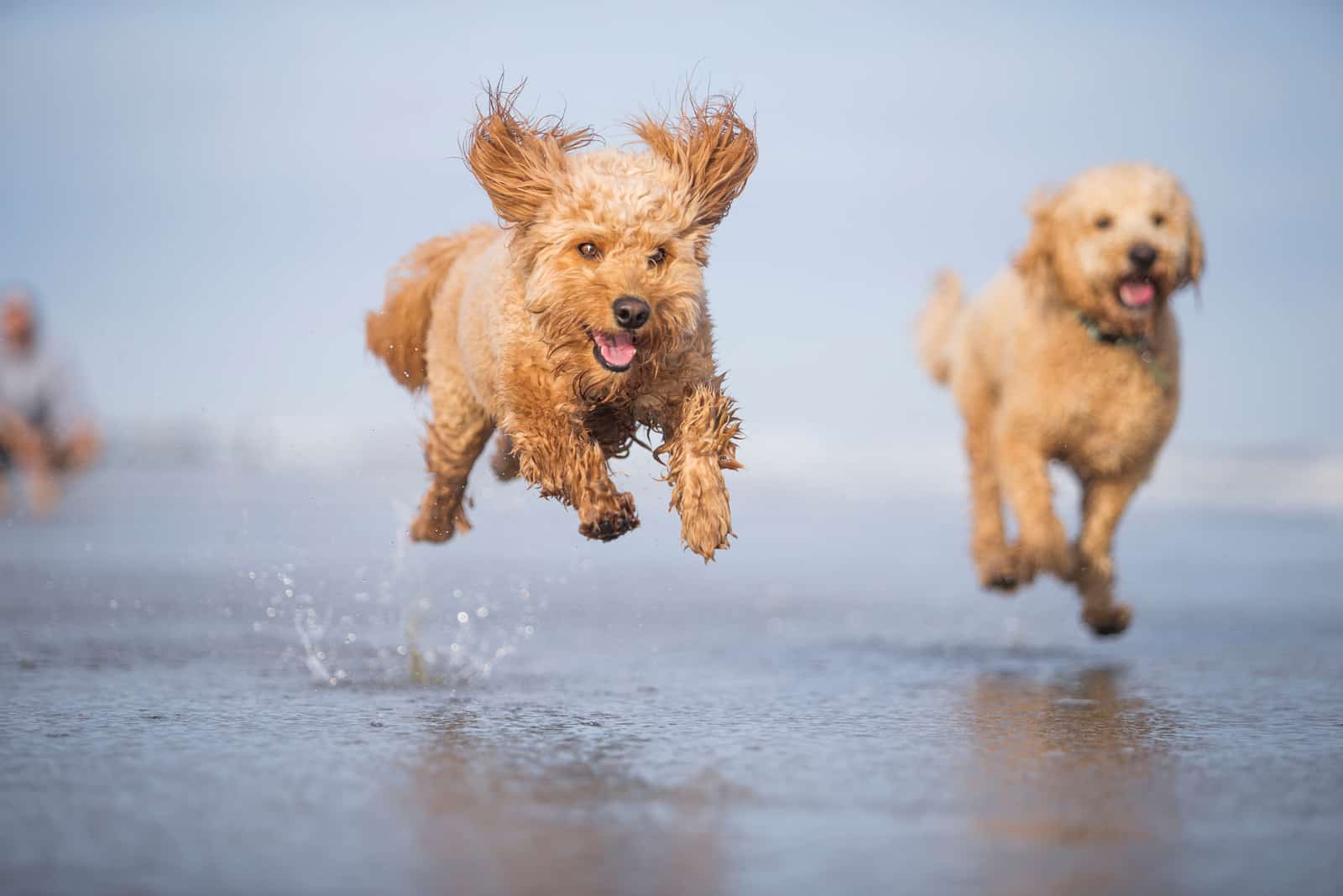
How Do I Take Care Of My F1BB Goldendoodle
Having low shedding traits is not a sign that your new puppy won’t be a handful.
Your Doodle’s curly coat means that you will have to spend lots of money on professional groomers, or learn how to groom your dog at home.
Trust me – grooming an F1BB Goldendoodle isn’t difficult, but it is time consuming.
First of all, every F1BB Goldendoodle should be brushed for at least ten minutes every day. Light brushing would be just fine to prevent matting of the coat. Of course, if you’re short on time, two to three times a week will also work.
While brushing, I recommend you get a nice slicker brush and a dematting comb. A slicker will pick up any lose hair trapped in your dog’s coat, while a comb will solve tangles.
Bathing your new Goldendoodle is something you shouldn’t do too often. Every two to three months is recommended. Otherwise, you’re risking dry and damaged skin, which only leads to a poor-looking coat and further issues.
A lot of Goldendoodles are having trouble with their diet. Malnutrition and poor-quality dog food may also lead to a poor coat condition, and that’s not something you want with this dog breed.
Are F1BB Goldendoodles Easier To Train?
Thanks to the Poodle parent, all Doodle generations are considered to be extremely intelligent pets. Even our F1BB is a fast learner and a smart cookie!
These dogs are great for dog training, and you shouldn’t experience any complications with them.
Training should start as early as possible. Good dog breeders will even begin training their puppies before they go to their forever home. Once the puppy is adopted, it’s your job to continue training by using methods like positive reinforcement.
All pups find positive reinforcement as something that is stimulating. By giving praises or treats while training your puppy, you’ll see that he will learn faster and perform better.
Potty training is something that bothers all dog owners. Luckily, most F1BB Goldendoodles are smart enough to master this by the age of six months.
I haven’t noticed any difference between the F1 generation and the F2 generation, for example. All Goldendoodle puppies can be trained efficiently. All you have to do is be really patient and show determination.
How Much Are F1BB Goldendoodles?
The F1BB Goldendoodles aren’t as common as the F1 Goldendoodles. Therefore, it’s only natural to assume they will be more expensive puppies on the market.
The initial purchase price is not the same with all breeders. But, expect it to be around $2,000 to $5,000.
I recommend you save money and buy from a reputable breeder – someone who will provide you health testing results and prove that the puppy is 100% problem-free.
Even though they’re mixed breed pups, F2BB Goldendoodles are designer dogs. Their popularity is even greater than with some purebred dogs, and thus, their price is also!
Final Words
We have Labradoodles, Cockadoodles, Cavadoodles, and many other Doodles, but not one is like our buddy – the F1BB Goldendoodle.
A puppy with the cutest appearance and the finest hypoallergenic traits is the puppy you need no matter if you’re allergic or not.
Simply put, the F1BB Goldendoodle is truly the dog of the future! Get one today and see how spectacular they are!


